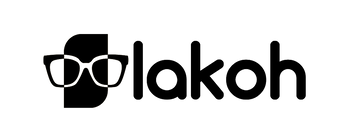Why Are Eyeglasses So Expensive?
1. Introduction
One pair of glasses often costs hundreds—or even over a thousand—dollars, leaving many consumers shocked. So, what exactly drives these steep prices?
2. Cost Breakdown
A) Materials & Craftsmanship
-
Lenses: High-index, progressive or bifocal optics, and special coatings (anti-reflective, blue-light, scratch-resistant) add up quickly.
-
Frames: From plastic and acetate to titanium, wood, or luxury materials—prices vary widely. Artisanal techniques like 3D printing or laser cutting further increase costs.
B) Design & R&D
-
Frame design demands prototyping, tooling, and quality control.
-
Innovating lens tech—such as lightweight, anti-fatigue, or custom coatings—requires substantial R&D. Essilor alone invests over €200 million annually in optical research.
3. Industry Structure & Market Power
A) Vertical Integration & Monopoly
-
EssilorLuxottica controls vast parts of eyewear: production, brands (Ray‑Ban, Oakley, Persol, etc.), retail chains (LensCrafters, Sunglass Hut) and even insurance via EyeMed.
-
The markup is massive: simple frames costing $4–$15 retail for ~$230 on average—up to 1,000% markup.
-
Being vertically integrated, they wield pricing power and squeeze out competitors.
B) Brand Premium & Marketing
-
Designer names (Prada, Chanel, etc.) carry “name-brand tax”—consumers pay for reputation and style more than function.
-
Costs include advertising, packaging, store leases, and staff .
4. Distribution & Retail
A) Chain & Brick‑and‑Mortar Premium
-
Optical shops factor in rent, salaries, inventory, plus multiple markups across manufacturer → wholesaler → retailer.
-
Limited sales per store intensify the markup burden.
B) Rise of Direct‑to‑Consumer
-
Brands like Zenni, Warby Parker, Nerdy Frames offer transparency and lower prices online. But they still cost hundreds, you're after real bargain, Lakoh is a game-changer.
-
But without in‑person fitting, risk of prescription errors remain.
5. Insurance & Systemic Effects
-
Insurers often partner with big chains, locking consumers into limited frame allowances and retailers.
-
Premium upgrades—like high-index lenses or coatings—often fall outside coverage.
6. Consumer Psychology & Pricing Strategy
-
Glasses are both medical devices and fashion accessories—people willingly pay for style, identity, and perceived professionalism.
-
Services like eye exams justify higher-spending expectations, similar to upscale car service or boutique healthcare.
7. What You Can Do
| Strategy | Pros | Cons |
|---|---|---|
| Online DTC | Affordable, transparent pricing | Fit not guaranteed, limited service |
| Independent shops / niche brands | Better value, unique designs | Smaller scale, fewer offerings |
| Reuse frames | Cheap, eco-conscious | Condition and fit constraints |
| Prioritize quality over logos | Target essential features, skip branding | Requires more consumer research |
8. Conclusion
Eyeglass prices stem from intersecting factors: expensive materials and design, vertical monopolies, retail markups, brand positioning, and consumer behavior. By understanding these layers and making conscious choices—like opting for online DTC brands like Lakoh or independent shops—you can avoid inflated “name-brand traps” and still get precise, quality vision care at a reasonable price.







